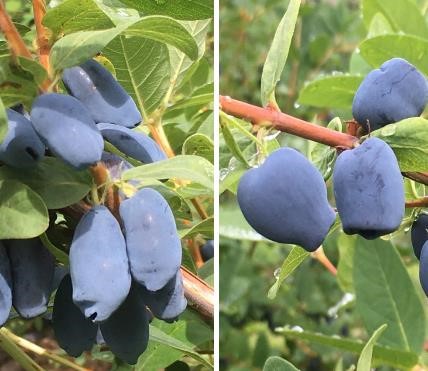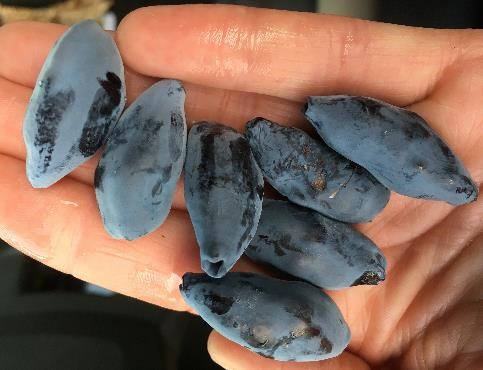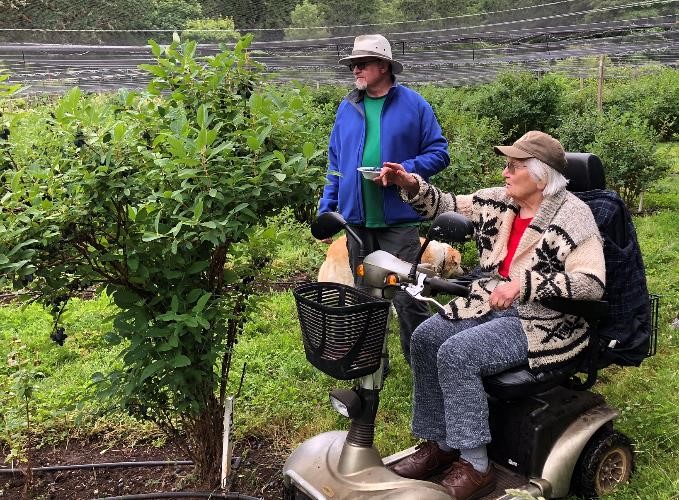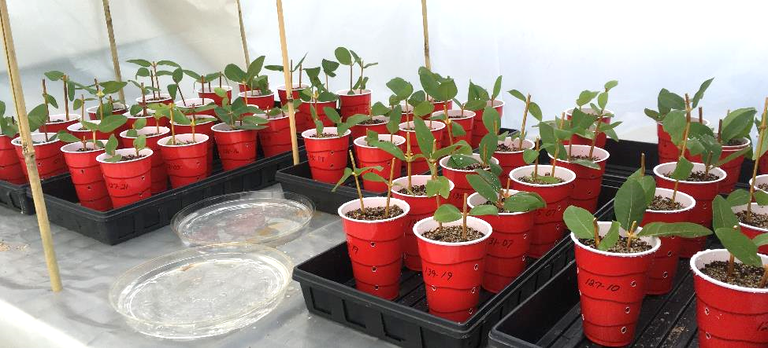Haskap Selection Research at CREC
Research into varieties of Japanese haskap that do well in North Dakota has been the focus of our project for a few years now. There is only one breeder of haskap in the US and we have been trialing her selections here in what she calls our ‘harsh’ climate (she’s not wrong!). North Dakota’s winemakers absolutely love haskap fruit. Jelly makers should, too, but there is just so little fruit available in the US.
In 2000, Dr. Maxine Thompson, a horticulture researcher retired from Oregon State University whose past research is directly responsible for the current boom in the US hazelnut industry, started breeding and making selections of haskaps from just eight seed sources from Japan. Today, her breeding efforts are finished but the variability she pulled out of those first seeds is amazing. In her orchard, you can find short or tall, upright or weeping, and wide or narrow plants with berries that are tart or sweet, large or small with a wide range of shapes.

Two different shapes of Japanese haskap
I met Dr. Thompson several years after planting some of her first superior selections in 2007. I have been visiting her almost every year since then to see the plants growing and fruiting in her orchard. It is so helpful to see and touch the plants in person because her selection criteria in the Edenic climate of Oregon does not always align with the traits we need here in North Dakota. We really need fruit that clings well and is perhaps not so large so that it can stay on the plants during windy conditions. It also needs to ripen early to avoid SWD damage.

Really huge haskaps at CREC.
In early June this year, as soon as Covid-19 travel restrictions lifted in Oregon, my husband and I drove to Dr. Thompson’s orchard, camping on the way there and back, to stay safe from the coronavirus. It was bittersweet to touch the last plants to emerge from her careful selections of the past 20 years. I made the orchard-wide evaluations, trying to keep true to all I had learned at her side these last years. I am only a small part of this work; her good friend and former student, Shinji, and employee Steve, have done all of the heavy lifting right there at the orchard, year-round, these past few years.

Maxine Thompson, showing my husband one of her new favorite plants.
After evaluating the ripe fruit, I brought back green cuttings and got them started in our greenhouse. My success was so-so, but we can try again this spring with dormant cuttings. We continue to work with other new plants coming into production each year in the CREC orchard.

Japanese haskap cuttings in the CREC greenhouse.
I don’t write about haskap very much because it is hard for the public to buy any varieties that are great in our local conditions. Research and production of other hybrids has been centered in Canada and it is costly to get plants and fruit across the border. If you would like to try some commercially available Japanese haskap plants, talk to your local greenhouses about ordering Proven Winner plants ‘Yezberry Maxie’ and ‘Yezberry Solo’. Also, the newest plants, ‘Maxine’s Opus’ and ‘Kawai’, are available through Gurney’s and Gardens Alive! catalogs and websites. You can also look for other plants at the websites of Haskap Oregon and HoneyberryUSA.
Kathy Wiederholt
Kathy.Wiederholt@ndsu.edu
Fruit Project Manager


